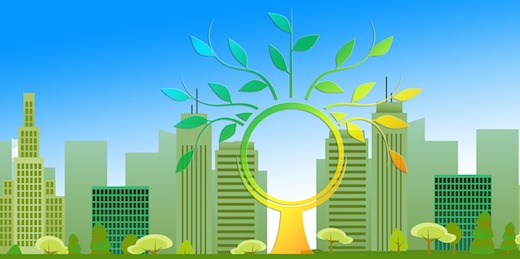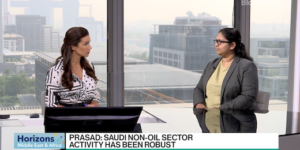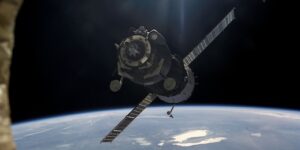The article titled “Climate Change is an Existential Threat for the Middle East & the GCC” will be published in the Aspenia Issue, Fall edition 2019, and can be downloaded in Italian.
While humans squabble and debate their commitment to combat climate change -despite the clear and present danger warning of the 2018 report by the Intergovernmental Panel on Climate Change (IPCC)- Nature has been relentless and unforgiving. Extreme weather events are growing in intensity and frequency. Examples of which include maximum temperatures being reached in Bahrain this June since records in 1946. The ongoing drought in India and related acute water shortage continues, threatening rural communities and leading to greater poverty. It is expected that sea levels are expected to rise between 10 and 32 inches or higher by the end of the century. Arctic ice loss has tripled since the 1980s [1]and Antarctica lost as much sea ice in four years – four times the size of France [2] as the Arctic lost in 34 years. The Global Climate Risk Index reports that “altogether, more than 526 000 people died as a direct result of more than 11 500 extreme weather events; and losses between 1998 and 2017 amounted to around US$ 3.47 trillion (at PPP rates).[3]
Moving from Climate Crisis to Climate Opportunity
The World Bank estimates the current cost of climate-related disasters at $520bn a year, forcing some 26mn people into poverty annually.[4]In comparison, the additional cost of building infrastructure that is resistant to the effects of global warming is only $2.7tn in total over the next 20 years. By contrast, the currently known cost of inaction is enormous and expected to reach a staggering USD 23 trillion a year by the end of this century [5], four times greater than the impact of the 2008 financial crisis.
The economic impact of climate change will be pervasive ranging from major disruption to food chains, the ‘creative destruction’ of fossil fuel based activities, widespread damage to infrastructure, increased inequality across and within countries unable to counter the effects of climate change, mass forced displacement of human and animal populations, and the destruction of human, animal and plant habitats. The climate change externality is global, long-term, persistent, and potentially irreversible. This has prompted Joe Stiglitz to say that ‘the climate crisis is our third world war. It needs a bold response’.[6]
Part of the answer involves deep decarbonisation, shifting our economies from fossil fuels towards green economy solutions, based on renewable energies and technologies. Rapid technological change and innovation has made renewable energies (solar, wind, hydro, geothermal) directly competitive with fossil fuel based technologies and enabling distributed energy resources. More recently, AI and Blockchain are being applied to renewable energies increasing their efficiency and competitiveness. These can be powerful technologies for economic development and for lifting rural communities out of poverty through ‘electronification’ and digitalisation. We should not, however, delude ourselves: technology is not a panacea absent of political will, commitment and public and private investment. The growing political acceptance of ‘green new deals’ generates some cautious optimism.
MENA/GCC climate change impact and risks
While climate change will be global, its regional impact will be varied and unequal, with MENA along with Sub-Saharan countries among the most vulnerable. Growing desertification, widespread drought, high population growth rates (leading to a doubling of population by 2050), rapid urbanisation, extreme heat, compound the effects of water scarcity to magnify the impact of climate change. Last year was the fourth warmest on record, with Algeria recording the hottest temperature (51.3°C) reliably recorded across Africa.
About 17 countries are already below the ‘water poverty line’ set by the UN. The World Bank estimates that climate-related water scarcity will cost the region 6 to 14% of its GDP by 2050, if not earlier. The MENA region’s annual recharge rate of renewable water resources amounts to only 6% of its average annual precipitation versus a world average of 38%. In this context, it should be remembered that Saudi Arabia has exhausted almost 4/5-th of its aquifer water after misguided “food security” policies encouraged water & energy intensive modern farming to transform a largely desert country to become the world’s 6thlargest exporter of wheat! This has now stopped but the environmental damage is permanent.
Climate Change and Conflict
Home to 6% of the global population but just 1% of freshwater resources, the MENA region (already in the throes of conflicts over resources, land, ideologies and religion) will very likely be fighting “water wars” by mid-century. Ethiopia is building its Grand Renaissance Dam and Egypt claims that it will cut downstream flows and water supply to Egypt by some 25%. The potential for conflict is growing, with Egyptian President el-Sisi openly declaring that the dam is “a matter of life and death.”[7]
A growing body of evidence (for example Burke et al. (2014))[8]and research shows a strong linkage between climate and conflict, with adverse climatic events increasing the risk of violence at both the interpersonal level and the intergroup level, in societies around the world and throughout history. While climate change was not the main driver of the Arab Firestorm in 2011, the Syrian civil war is linked with an extended drought period between 2006-2011 which caused 75% of Syria’s farms to fail and 85% of livestock to die, devastating rural communities, resulting in forced displacement. The Libyan and Yemen wars as well as the Sudan civil unrest have been exacerbated by low rainfall and associated drought leading to rural impoverishment and migration.
Reliance on desalinated water for domestic use is another concern. MENA accounts for nearly half of the world’s desalination capacity and the GCC’s dependence on desalination is almost 90%. This leaves a large carbon footprint as the region is reliant on energy-intensive thermal desalination plants. Ironically, the region is also at the risk of flooding: the World Bank identified 24 port cities in the Middle East and 19 in North Africa at particular risk of rising waters [9]. For countries like Kuwait and the UAE, the threat of rising sea levels could permanently impact up to 24% and 9% of their GDP respectively. Furthermore, the wide disparity in regional wealth and incomes (about $70k per capita in Qatar to less than $1k in Sudan) implies differences in adapting to and mitigating climate change risks.
Oil Producers Face an Existential Threat
Climate change poses an existential challenge, threatening the economic viability of the MENA oil producing countries. The energy transition to comply with COP21 and related commitments leading to a global shift away from fossil fuels to renewable energy, implies that the main source of wealth and income of the GCC and oil producers could rapidly depreciate in value as a result of the fall in demand and prices. Fossil fuel assets could become “stranded assets” i.e. assets that are not able to meet a viable economic return as a result of unanticipated or premature write-downs. To counter this existential threat, the GCC countries need to accelerate their economic diversification plans and develop and implement decarbonisation strategies. The nations have tentatively and timidly embarked on this path.
MENA/GCC policies to combat climate change
The GCC nations have initiated a phased removal of fuel, electricity and water subsidies to reduce the high energy intensity of consumption and production induced by distortionary subsidies. The removal of subsidies will reduce energy use and help shift the energy mix away from fossil fuels, and also creates fiscal space allowing funding of renewable energy investments and climate-resilient infrastructure.
The Middle East and GCC are part of the Global Sun Belt: more energy falls on the world’s deserts in 6 hours than the whole world consumes in a year! Harnessing solar power is an efficient policy choice, while wind power market is slowly catching up in Jordan and Morocco, though more than 56% of the GCC’s surface area has significant potential for wind deployment.
The GCC nations and especially UAE, are taking a lead in MENA in increasing energy efficiency-a low hanging fruit- and investing in renewable energy. There is now a GCC renewable energy project pipeline comprising over 7 GW of new power generation capacity to be realised within the next few years. The surge in projects has been supported by the rising cost competitiveness of renewables (it is now actually cheaper to build new wind and solar PV plants than it is to run existing fossil-fuel ones), as well as the falling costs of energy storage (by 2021, the capital costs of lithium ion battery-based storage are expected to fall by 36% compared to the end of 2017 [10]).
IRENA’s 2019 report [11]estimates that by 2030 the region is on track to leverage renewables to save 354 million barrels of oil equivalent (a 23% reduction), create some 220,500 new jobs, reduce the power sector’s carbon dioxide emissions by 22%, and cut water withdrawal in the power sector by 17%. Renewable energy related targets range from UAE’s ambitious goal of 44% of capacity by 2050 (from 27% clean energy in 2021) to Bahrain’s target of 10% of electricity generation in 2035, and Saudi Arabia’s 30% of generation from renewables and others (mainly nuclear) by 2030. The other important component of reducing energy consumption is energy efficiency, with a 6% target of reducing electricity consumption in Bahrain (in 2025) to 30% in the UAE (in 2030). Countries are now starting to commit to a net-zero emissions goal – 15 nations have declared the intention of reaching net zero emissions in or before 2050 [12]. The GCC are yet to announce their intentions in this regard.
In addition to the deployment of renewable energy projects, energy efficiency investments are another area for reform. Retrofitting existing buildings will improve energy efficiency and reduce carbon emissions. Green buildings [13]is another policy initiative which has gained traction: the Dubai Municipality has issued the Green Building Regulations and Specifications for all new buildings in the emirate since March 2014. But Dubai is the only city in the MENA region to join the Building Efficiency Accelerator programme, to double the rate of energy efficiency by 2030.
Climate Change Challenges facing MENA and the GCC
Looking ahead, the countries of the region face three broad challenges:
- Institutional challenges:
- Policies are in place to move away from fossil fuels to clean energy; however, until subsidies are eliminated, the legacy of building large conventional plants to feed demand is unlikely to end.
- These policies should ideally be supported by adopting a Zero Net Emissions policy, to serve as a comprehensive, unifying basis for climate change policy. Other GCC nations could follow the UAE’s policy direction and establish Ministries of Climate Change & Environment.
- Unified regional standards are needed to remove barriers to trade and investment, are necessary for regional power market integration and to benefit from economies of scale.
- Build capacity to support the creation and development of climate change policy and regulatory experts who can support the government and private sector create policies and strategies to meet a Zero Net Emissions policy.
- Financing:
- Introducing Carbon Taxes in MENA would generate substantial revenue, increase energy efficiency and part fund decarbonisation strategies.
- Support for small-scale players and installations: significant initial capital requirements for big facilities deter the entry of small-scale players. Support for home and business PV installations would improve energy efficiency and creation of distributed energy resources.
- Facilitate New Energy Financing: global green bond issuances reached a record USD167 billion in 2018. The GCC could become the center for MENA and emerging market green bonds and Sukuk.
- Develop Green Banks to fund the private sector in decarbonizing, from energy efficiency, to retrofitting, to climate risk mitigation investments.
- Adopting technological innovations: implement Blockchain (for power/ grid chain management) and AI to increase efficiency, ability to store and share solar power via interconnected grids and smart meters.
Concluding remarks
Climate change poses some daunting challenges and existential risks for the MENA region, the GCC and other MENA oil producers. The bottom line is:
- The MENA countries are highly vulnerable to climate change because of their geographic conditions, demographics, lack of climate resilient infrastructure, deficient institutional capacity and preparedness to mitigate climate change risk. They also face–mainly in North Africa- the rapidly growing spillover effects of climate-induced mass displacement and migration from Sub-Saharan Africa. They face growing risks of climate related conflicts.
- The global energy transition and decarbonisation policies imply a growing risk that the fossil fuel resource wealth of the oil producers will become stranded assets. Similarly, the region’s banking & financial sector faces stranded assets risk, given its heavy exposure to the oil & gas sector. These are existential risks.
- The GCC countries have developed energy sustainability policies. These are modest given their large natural comparative advantage of harnessing solar & wind power and their substantial financial resources allowing accelerated investment in renewable energy assets. A Net Zero Emissions climate policy should be developed and implemented.
- To mitigate climate change risks, the region’s oil producers must accelerate their economic diversification away from oil & gas. This implies a rapid phasing out of fossil fuel subsidies. Decarbonisation and economic diversification are complementary strategies and a win-win opportunity. By diversifying into renewable and sustainable energy and climate risk mitigating industries and activities, the GCC can create jobs and a new alternative export base, through a Green New Deal.
[1]https://www.nationalgeographic.com/environment/global-warming/global-warming-effects/
[2]https://www.weforum.org/agenda/2019/07/antarctica-lost-sea-ice-4x-the-size-of-france-in-3-years/
[3]https://www.germanwatch.org/sites/germanwatch.org/files/Global%20Climate%20Risk%20Index%202019_2.pdf
[4]https://www.worldbank.org/en/news/press-release/2016/11/14/natural-disasters-force-26-million-people-into-poverty-and-cost-520bn-in-losses-every-year-new-world-bank-analysis-finds
[5]WEF discussion: https://www.youtube.com/watch?v=su38ondAwkg
[6]https://www.theguardian.com/commentisfree/2019/jun/04/climate-change-world-war-iii-green-new-deal
[7]See “How Climate Change Could Exacerbate Conflict in the Middle East”,
[8]Burke, M., Hsiang, S.M., Miguel, E. (2014): “Climate and Conflict”, downloadable at: https://www.nber.org/papers/w20598
[9]Egypt’s coastal city Alexandria, the second largest city, is at risk of being submerged by rising sea levels.
[10]See Lazard’s report https://www.lazard.com/perspective/levelized-cost-of-energy-and-levelized-cost-of-storage-2018/
[11]https://www.irena.org/-/media/Files/IRENA/Agency/Publication/2019/Jan/IRENA_Market_Analysis_GCC_2019.pdf
[12]https://eciu.net/news-and-events/press-releases/2019/one-sixth-of-global-economy-under-net-zero-targets
[13]Green building is the practice of creating structures in a resource efficient way without having any negative impact on the environment.






